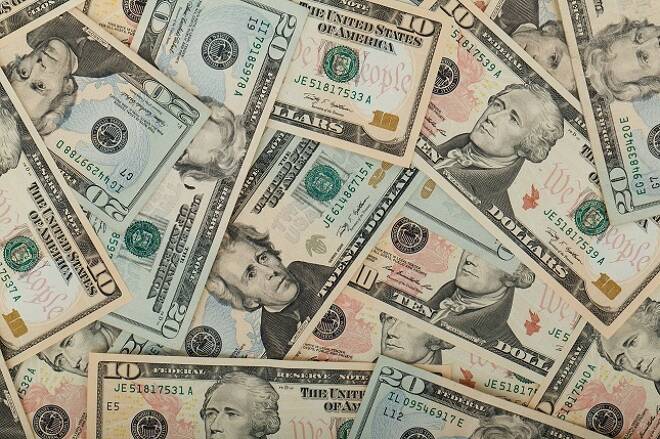Advertisement
Advertisement
The Dollar Gains Traction but Finishes Of Its Highs
By:
The dollar gained traction as 10-year treasury yields moved above 2.92%, driving up the value of the dollar and weighing on the currency pair. German
The dollar gained traction as 10-year treasury yields moved above 2.92%, driving up the value of the dollar and weighing on the currency pair. German wholesale inflation accelerated higher but the dip in the Zew sparked concerns of a decline in German growth.
Technicals
The EUR/USD moved lower but bounced near support which is an upward sloping trend line that comes in near 1.2245. The exchange rate sliced through the 10-day moving average which is seen as resistance near 1.2345. Momentum has turned negative as the MACD (moving average convergence divergence) index generated a crossover sell signal. This occurs as the MACD line (the 12-day moving average minus the 26-day moving average) crosses below the MACD signal line (the 9-day moving average of the MACD line). The fast stochastic also generated a crossover sell signal.
German PPI inflation accelerated
German PPI inflation accelerated to 1.9% year over year from 1.8% year over year, with prices up 0.1% month over month. The uptick in the headline rate was slightly less pronounced than anticipated. And uptick in intermediate goods prices was the main driver with prices for metals rising 4% year over year in March. Energy prices were up 2.4% year over year and excluding energy PPI stood at 1.7% year over year. PPI clearly is already at levels that the ECB would like to see for headline CPI, but with energy prices now rising sharply, and German wage agreements coming in on the high side, the risk that inflation will in fact surprise on the upside in the medium term is rising.
A little watched early indicator which tracks recession risks in Germany has attracted considerable attention this week, and together with the dip in the ZEW index, has sparked concerns about the risk of a sharp and sudden correction in the German economy. A closer look suggests that the central scenario still remains a rather gradual slowdown in Germany and Eurozone growth, as capacity constraints limit further expansion. There is an important messages for the ECB though – the central bank has to start reigning in its expansionary policy sooner rather than later – not just to prevent the risk of overheating, but also to gain breathing space in case of another crisis.
SNB’s Jordan sees no need for change in policy
SNB’s Jordan sees no need for change in policy. The Swiss central bank President told Bloomberg last night that “there is no need to do anything regarding monetary policy at this morning”. Speaking after the CHF broke through the 1.20 per euro mark for the first time since the SNB gave up that ceiling, Jordan said the franc’s drop goes in the “right direction” but added that the currency is still considered a haven and the situation “fragile” and prone to change. So the SNB “remains very prudent” and “convinced that the current monetary policy is still necessary”. Further confirmation that the SNB is firmly on hold while watching also the ECB’s move very closely. If and when the ECB finally starts to reign in its support it will also increase the room for the SNB to maneuver. Bloomberg polls predict the first rate hike from the SNB in the last quarter of 2019.
Japan’s headline inflation slowed in March
Japan’s headline inflation slowed in March from February, highlighting the central bank’s struggle to hit its 2 percent price growth target. The core consumer price index, which includes oil products but excludes volatile fresh food prices, rose 0.9 percent year-on-year in March, matching economists’ median estimate, Ministry of Internal Affairs and Communications data showed on Friday. It followed a 1.0 percent gain in February.
Fed hawk Mester, a voter, reiterated gradualism in her comments, noting it will help avoid a build-up of excess and hence help sustain the expansion. Further rate hikes are appropriate this year and next, she wrote in the text of her speech. She expects inflation to rise to the 2% target, or over it, in the next one or two years, but doesn’t see a sharp spike. The U.S. is slightly beyond the level of maximum employment, she believes. Her comments are in line with our view, and the markets, that the FOMC will tighten two more times this year.
About the Author
David Beckerauthor
David Becker focuses his attention on various consulting and portfolio management activities at Fortuity LLC, where he currently provides oversight for a multimillion-dollar portfolio consisting of commodities, debt, equities, real estate, and more.
Advertisement
